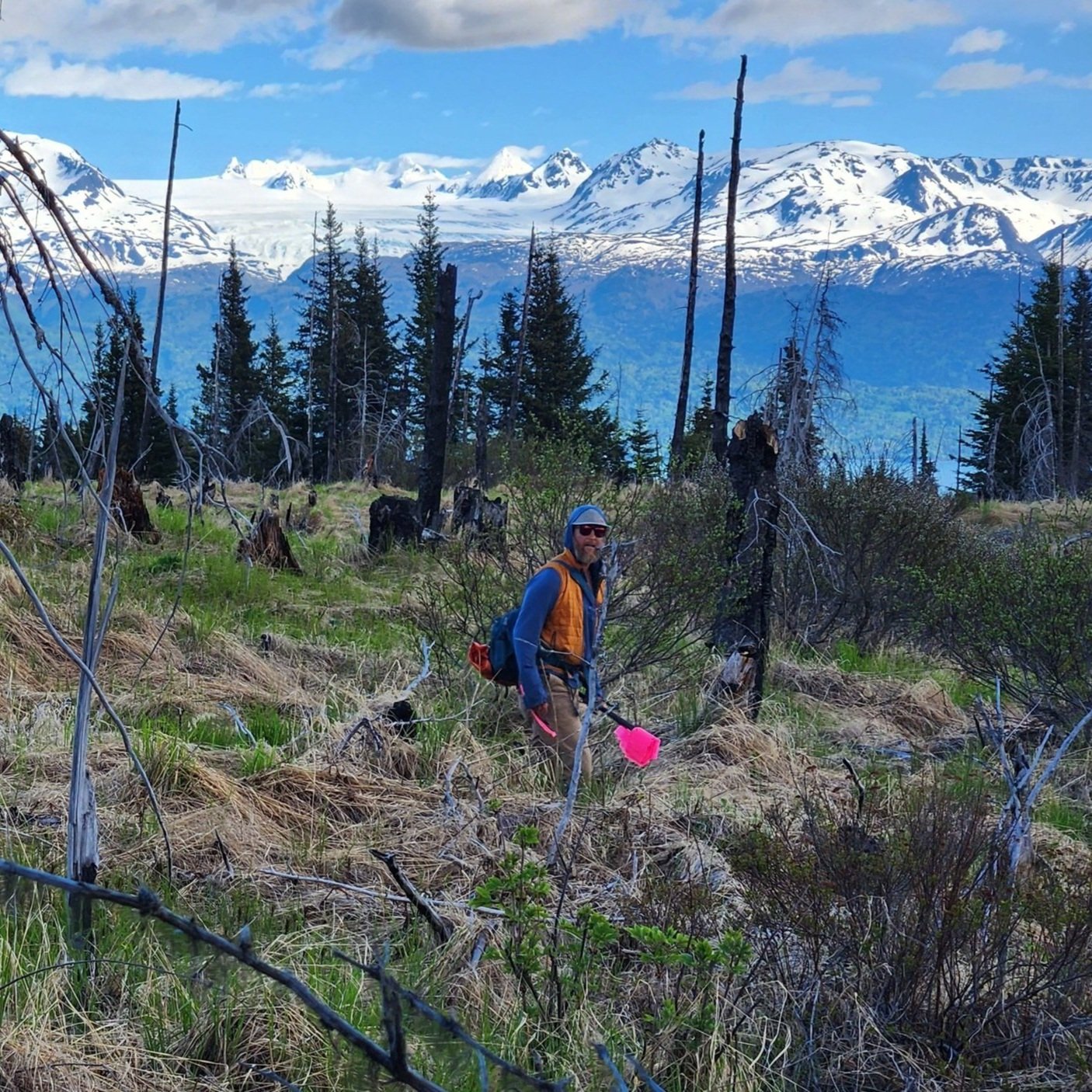
Trail Contracting
Resources
Photo: Allegra Trails
Introduction
Contracting for a trail-related project typically begins with the development of a project bid and ends when the scope of work is complete. This web resource provides an overview of multiple solicitation tools, contractual elements, and processes as they vary with scope of work, resources, and timelines. Many agencies have specific required elements that may not be included in the information below. This resource was developed as part of this 2021 webinar posted on YouTube: From IDIQ to SOQ, Trail Contracting models and a Trail Contracting presentation delivered in 2024.
Photo: Great Lakes Trailbuilders, Patagonia
Solicitation Tools + Models
The type of solicitation tool should be tied to project’s scope of work, resources, timelines.
Request for Proposal (RFP) or Quotation (RFQ)
The Statement of Work (SOW) and Goals are clearly defined, but process to accomplish the project may vary.
The contractor proposes an approach and demonstrates an understanding of effort and resources needed to accomplish the project.
Request for Qualifications (RFQ)
An RFQ provides information on the competency and quality of the contractor.
It can be a phased part of an RFP, or IDIQ - BPA.
Indefinite Deliverables Indefinite Quantity (IDIQ) or Blanket Purchase Agreement (BPA)
They typically are used for longer term and multi-year awards.
It builds or establishes a pool of qualified vendors/contractors who can bid on specific elements of the project.
The Statement of Work and timelines may vary for elements of the project.
The process retains competition (if more than one vendor is qualified).
Sole Source
Sole source can be applied when one contractor is uniquely qualified for a specialty project.
It is often used after previous successful projects with the contractor or well vetted referrals and portfolio.
Commonly used for projects with non-standard items requiring high level craftsmanship.
This model may be restricted in some government procurement processes.
Typical Solicitation Elements
Project Description
Project Location
Partners
Vision
Timelines/History
Scope of Work
Desired Outcomes
Deliverables Required
Project Timeline
Proposal Format & Limits
Deadline For Submittal
Proposal Elements
Project Approach
Staff
Similar Experience
References
Price
Selection Methodology and Timeline
Review process
Scoring rubric (if available)
Points allocated by category
Important dates (deadline, review period, notification)
Insurance and/or Bonding Requirements
Insurance Requirements:
Professional Liability
General Liability
Auto insurance
Other policies needed
Bond Types (if applicable)
Performance Bond (guarantees that the work is completed as promised)
Payment Bond (ensures that subcontractors, suppliers, and laborers are paid for their work)
Available Maps/Resources
Links to partner organizations
Additional detail on project background
News/articles/archives
GIS data and static mapping resources
If construction, may include planning and design deliverables:
Conceptual plan
Trail master plan
Construction documents
Scope of Work:
Types of Trail Planning Projects
Feasibility Study
Is a trail possible and what may be the hurdles and general costs involved?
Deliverable - Conceptual Plan
Planning
What kind of trail/trail system do “we” want, how can it be developed, and at what cost?
Deliverable - Master Plan
Design
Where will the contractor build the trail and what will be involved?
Deliverable - Construction Documents
Assessment
What are the problems and how are they resolved?
Deliverable - Maintenance or Redevelopment Plan
Photo: Ptarmigan Trails, Alaska
Type of Construction Projects
Small Construction Projects
Price ranges vary- $10,000 (USFS Micro), $50,000.00 (State of Maine as example), $250,000 (Federal)
Often has a clearly defined scope of work (bridge, staircase, skills park, etc.)
Frequently is a Lump Sum, Time and Materials, or Cost Plus contract
Contracts may be only a few pages long, but need to cover the client and contractor
Large Construction Projects
Generally more detailed contracts, but the fundamentals remain the same
Bonding requirements, subcontractors, change orders, etc. are common
Design team should remain involved during construction when possible
Qualified client representative recommended to oversee scope, may be 3rd party
Design/Build Projects
Preferred when a detailed design plan is lacking
Success relies on trusting relationship between client and contractor
May be able to modify scope of work without a change order
Site visits and/or periodic reports are essential
Potential cost savings by allowing flexibility during construction
Hybrid Construction
Combining labor resources (professional, agency, nonprofit, youth corps, volunteers, etc)
Labor resources vary in efficiency and skill; can present challenges
Can increase access to funding sources
Community benefits can include bolstered stewardship, workforce, engagement
Typically high ‘soft’ costs
Accountability and warranty can be a challenge
Need adequate training and construction management
Photo: Nature Trails, Utah
Elements of Trail Construction Contract
The elements in a construction contract are typically set by the client and dictated by the agency/land manager. This is a list of typical items that can be included.
Description of parties
Location
Scope of work
Payments and compensation
Completion schedule
Contractor’s responsibilities
Owner/Client’s responsibilities
Change Order Process
Termination
Indemnification
Insurance Requirements
Dispute Resolution
Arbitration
Disbarment/Suspension
Equal Employment Opportunity
Force Majeure
Governing Law
Schedule/Sequence of Work
Equipment Specifications
Construction Methods
Construction Drawings and Specifications
Qualifications/Licensing
Subcontractor details
Bonding
Warranty/Guarantee
Retainage/Contingency
Photo: Oregon Woods
Construction Pricing
There are multiple models used in trail construction pricing which have both pros and cons for contractors and clients.
Lump Sum
All risk on the contractor
Most likely to have change orders
Unit Price
Estimated final cost, but may be +/-
Units can be cost per foot (of trail, bridge, armoring, steps etc. or cost per item (i.e. technical trail feature)
GMP - Guaranteed Maximum Price
Unit price with a limit
Should generally be 10-20% over estimated cost
Minimizes paperwork for change orders
Time and Materials (Cost Plus)
Shared risk between contractor and client
Potential cost savings with the right contractor
Often needed for ‘what if’ visionary projects
Day rates
Need well defined deliverables and timelines
Project oversight and construction management ensures efficiency
Payment Do’s and Don’ts
DO:
Be transparent about payment terms
Pay scheduling deposit or mobilization fee (1-10%), not both.
Process invoices promptly
Approve invoices with well documented work corrections
DON’T:
Pay large deposits (30-50%) in advance without recourse or trust
Agree to payment terms you cannot meet (be transparent)
Limited capital, grant reimbursements, internal bureaucracy
Withhold invoices for minor corrections mid-project
Process new invoices if corrections from previous cycle aren’t complete
Pay final invoice until all written punch list items are complete
Elements of Successful Projects
Planning + design process achieves goals
The level of design is appropriate for construction approach(es)
Clear, enforceable expectations that are appropriate for the scope and procurement process
Agreed upon line item costs regardless of contract format
Be covered legally, but focus on deliverables and transparent costing
Set expectations for payment terms and project timeline
Continuity from planning + design through implementation
Collaborative, trusting and open dialogue
Cost effective and profitable
Photo: TrailScapes Pty Ltd, South Australia
Thanks to Jed Talbot (OBP Trailworks), Jeremy Wimpey (Applied Trails Research), Scott Linnenburger (Kay-Linn Enterprises), Scott Gordon (ContourLogic), and Matt Malone (Nature Trails) for developing the original resources.





